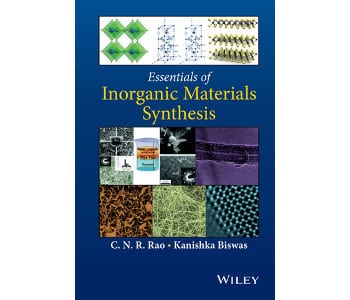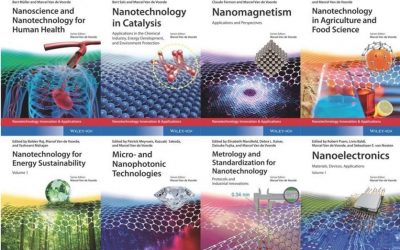Essentials of Inorganic Materials Synthesis
By C. N. R. Rao and Kanishka Biswas
Hardcover
ISBN: 978-1-118-83254-7
224 pages
Hardcover: $99.95
E-book: $79.99
Click here for more information
Book reviewed by Prof. Li Song and Yasir A. Haleem, University of Science and Technology of China, Hefei, China.
In the last two decades, the invention of new, sophisticated scientific tools and new synthesis techniques revolutionized the materials research world. As the materials world is advancing rapidly, there is not only a strong demand for a comprehensive book about the synthesis of different materials, but also a need to revise it on a regular basis to offer creative perspectives. In the field of inorganic materials, C. N. R. Rao and Kanishka Biswas addressed this need by writing a book entitled “Essentials of Inorganic Materials Synthesis”.
This book is an expansion and revised form of an early small monograph that had been published several years ago by one of the authors. They describe the new version as a guide to students, teachers and practitioners, and it serves its purpose very well. It is written in simple language with a clear focus. It is equipped with brief illustrations, well explained chemical equations and cogent figures. Numerous examples related to every synthetic method discussed are clearly elaborated, and this makes it easily understandable for potential readers. It explains the synthesis process along with the corresponding instruments used during the synthetic procedures.
This is a comprehensive book for materials researchers. The book covers all major synthetic processes for a basic course. The chapters of the book are categorized into synthetic methods and materials. Each chapter is further classified into sections according to the apparatus and parameters used in synthetic processes as well as the type of materials. It also discusses synthetic processes classified on the basis of temperature, pressure and other parameters. All of the synthetic processes are explained with stepwise chemical reactions, along with suitable examples.
This book starts with a brief introduction followed by a chapter of common reaction types employed in synthesis. In chapter 2, the authors describe different types of reactions, along with suitable and fully explained examples. The ceramic method is common for the synthesis of oxides, sulphides, and phosphides, and it is briefly described in chapter 3 using examples and illustrations. Chapter 4 highlights the synthesis of complex materials by using decomposition of precursor compounds. Combustion synthesis is explained in chapter 5, while the arc and skull methods are explained in chapter 6. Reactions occuring at high pressure are discussed well in chapter 7. The next two chapters are based on mechanochemical, sonochemical and microwave methods. Soft chemistry routes, such as topochemical reactions, intercalation reactions, ion exchange reactions, use of fluxes, sol-gel synthesis, electrochemical, hydrothermal, solvothermal and ionothermal synthesis, are briefly explained with complete chemical reactions and illustrations. Nebulized spray pyrolysis is discussed in chapter 11. Chapter 12 throws light on chemical vapor deposition and atomic layer deposition.
The focus of chapter 13 is nanomaterials. It covers the synthesis of different shapes of nanomaterials. All the synthetic processes discussed in previous chapters are discussed again but in the perspective of nanomaterials. This chapter also discusses the complexities of the synthetic processes for the production of nanomaterials. The last chapter discusses the synthesis of general materials. This chapter starts with the synthetic processes of metal based borides, carbides, nitrides, chalcogenides, halides, silicides and phosphides. Intergrowth structures are also discussed with elaborated examples. Misfit, intermetallic and super-conducting compounds are also part of this chapter. Lastly, synthesis of different types of porous materials are described and nice illustrations provide a better understanding of their structure.
It is clear that the hundreds of reactions presented, with brief explanations, involved in synthetic processes can be a helpful guide for a student who has finished his/her courses and just stepped into experimental work related to material science. This book will provide students with a glimpse of the large number of synthetic processes without the need for searching individual papers. Thus, it will be highly suitable for beginners in the inorganic materials world and is recommended for the basic study of the synthesis of a large number of inorganic materials.
Text kindly provided by Prof. Li Song and Yasir A. Haleem.












